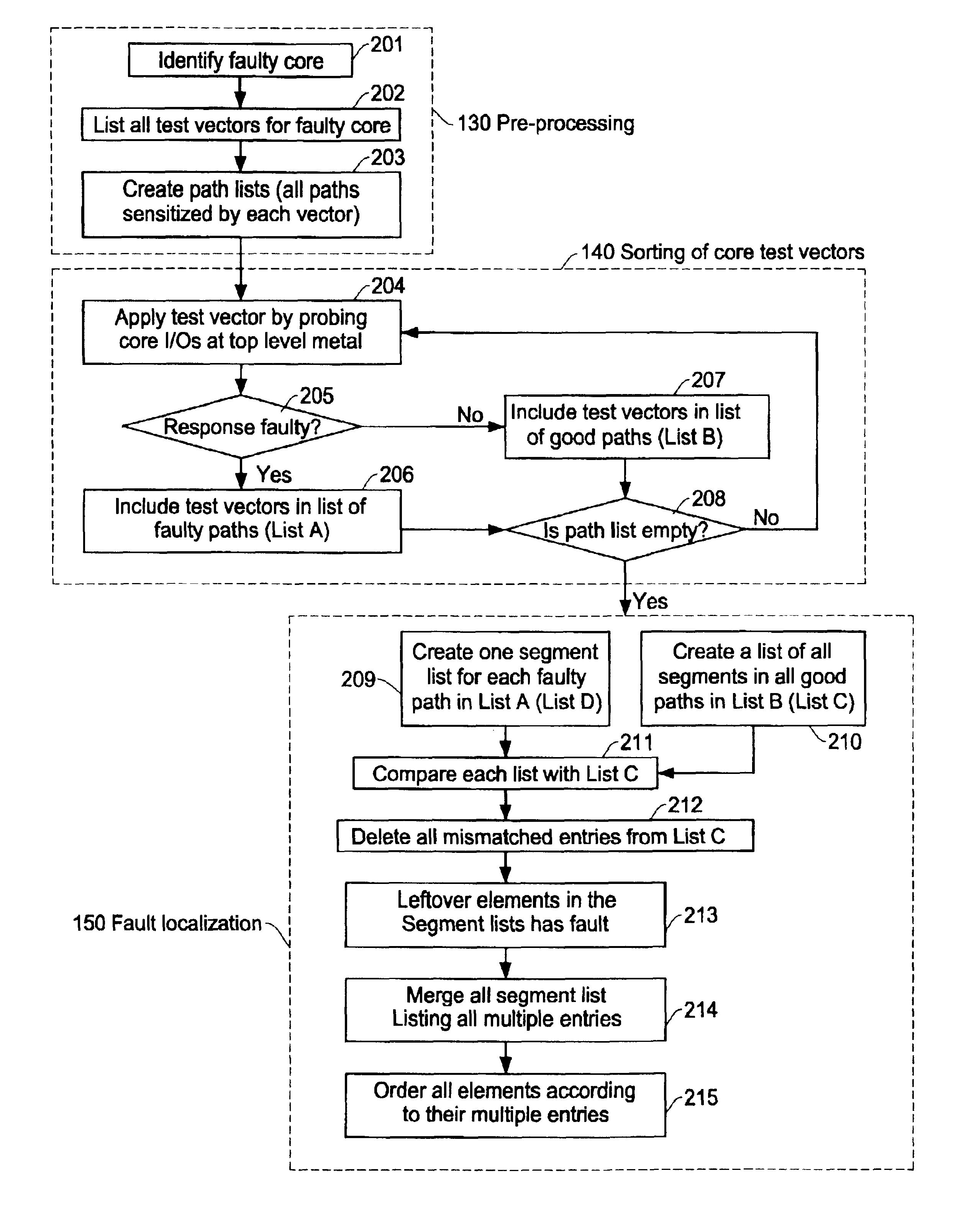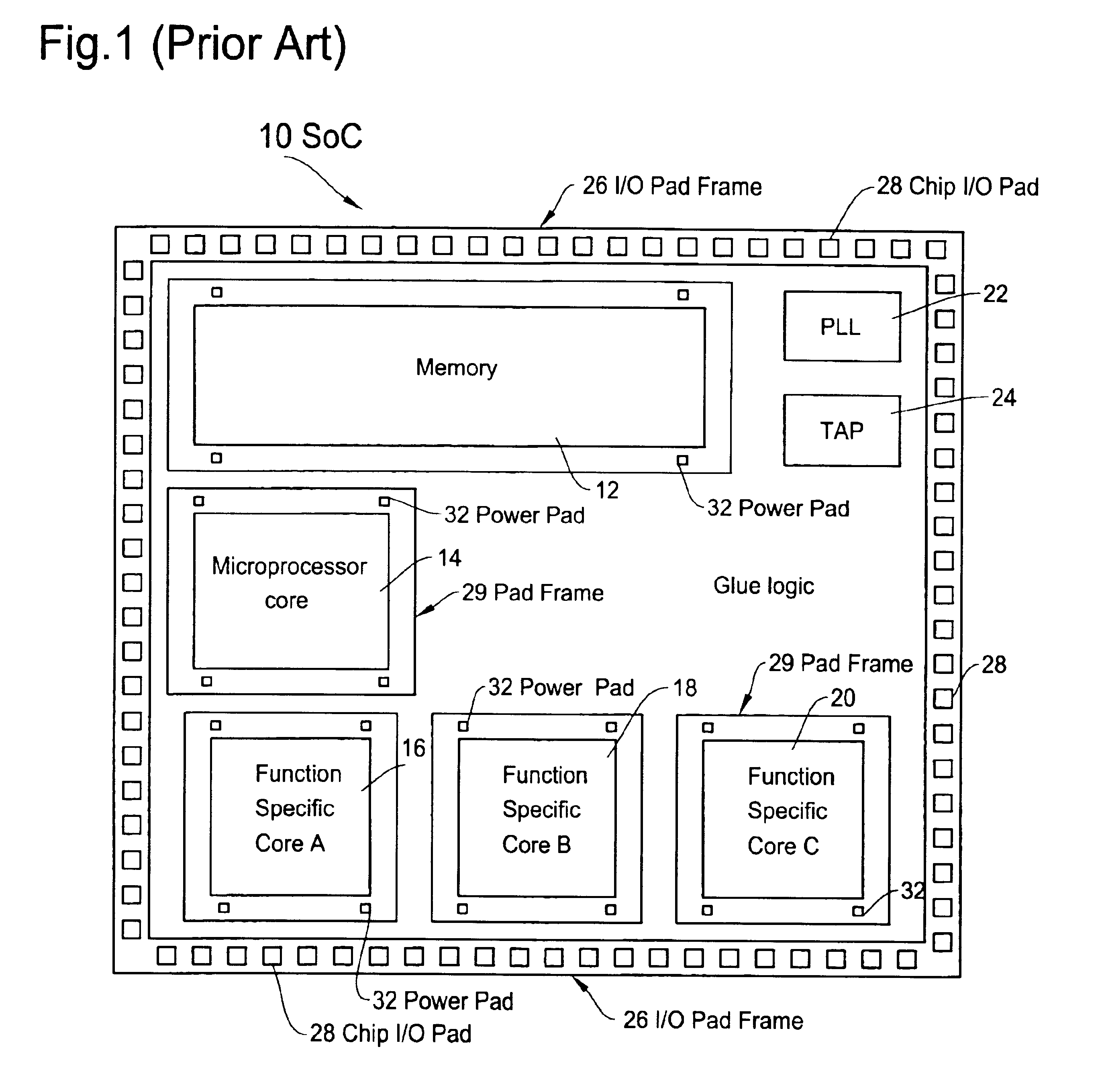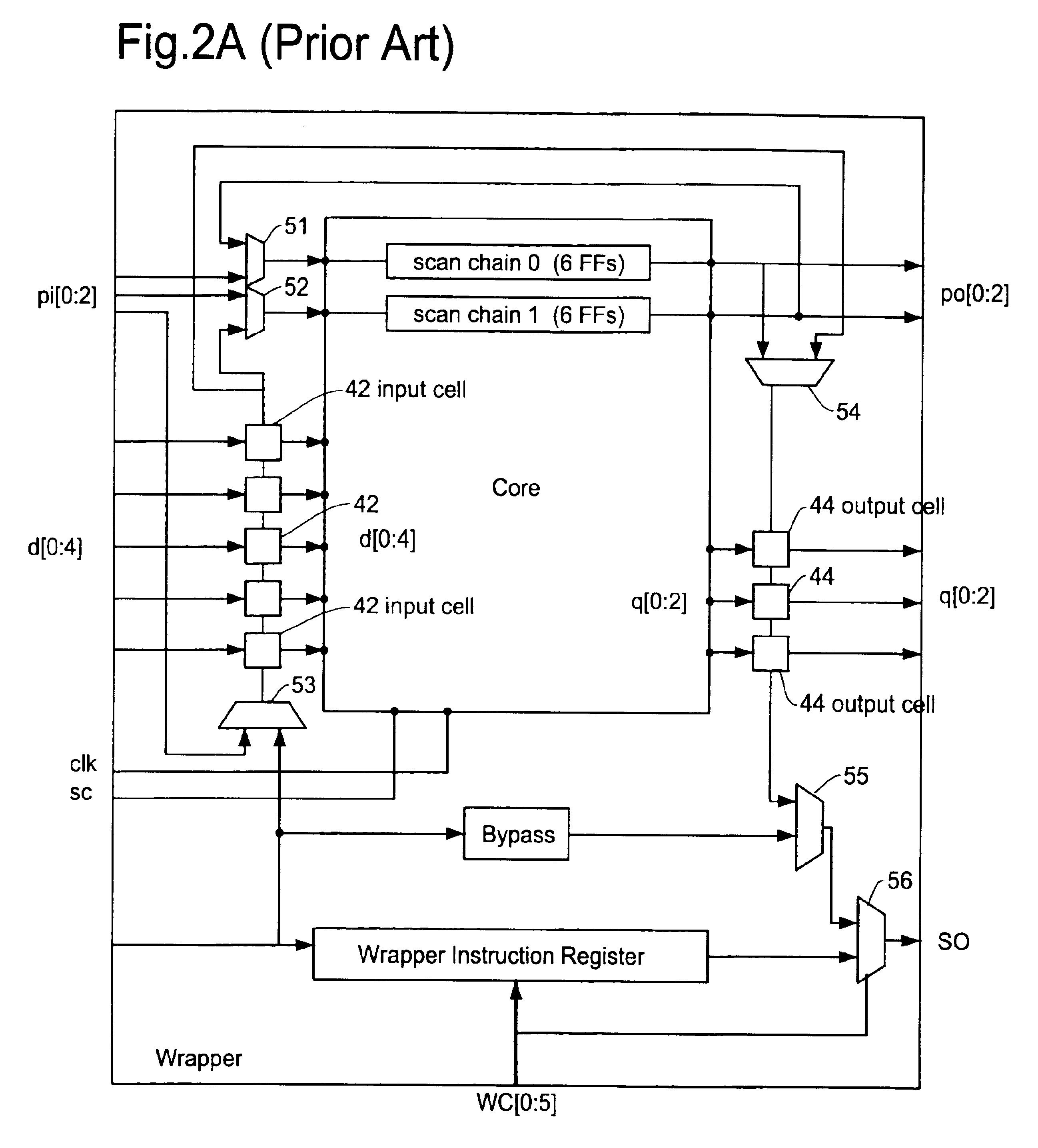Method of evaluating core based system-on-a-chip
a core-based system and chip technology, applied in the field of semiconductor device testing, can solve the problems of large difficulty in determining the functional correctness of prototype silicon, the complexity of these chips is far too complex to be tested by conventional means, and the limited observability and controllability of individual cores, etc., to achieve the effect of simple implementation
- Summary
- Abstract
- Description
- Claims
- Application Information
AI Technical Summary
Benefits of technology
Problems solved by technology
Method used
Image
Examples
Embodiment Construction
[0032]The present invention is now described in more detail with reference to the accompanying drawings. FIGS. 3-8 show the method of present invention for evaluating design integrity and fault diagnosis of embedded core based system-on-a-chip (SoC) ICs. FIGS. 3-5 show a special structure of SoC for testing the SoC and embedded cores therein in a silicon form (silicon debug) in accordance with the present invention. FIGS. 6-8 show the test procedures and test system structure for evaluating the SoC and embedded cores therein in the present invention. The method of the present invention is applicable only to the SoC that are designed to have the particular structure shown in FIGS. 3-5.
[0033]Referring now to FIGS. 3-5, there is shown a basic structure of an SoC to which the method of the present invention is implemented. This configuration establishes an I / O interface (I / O pads) for each core that can be directly accessible by traditional contact probes. The I / O interface of individua...
PUM
 Login to View More
Login to View More Abstract
Description
Claims
Application Information
 Login to View More
Login to View More - R&D
- Intellectual Property
- Life Sciences
- Materials
- Tech Scout
- Unparalleled Data Quality
- Higher Quality Content
- 60% Fewer Hallucinations
Browse by: Latest US Patents, China's latest patents, Technical Efficacy Thesaurus, Application Domain, Technology Topic, Popular Technical Reports.
© 2025 PatSnap. All rights reserved.Legal|Privacy policy|Modern Slavery Act Transparency Statement|Sitemap|About US| Contact US: help@patsnap.com



